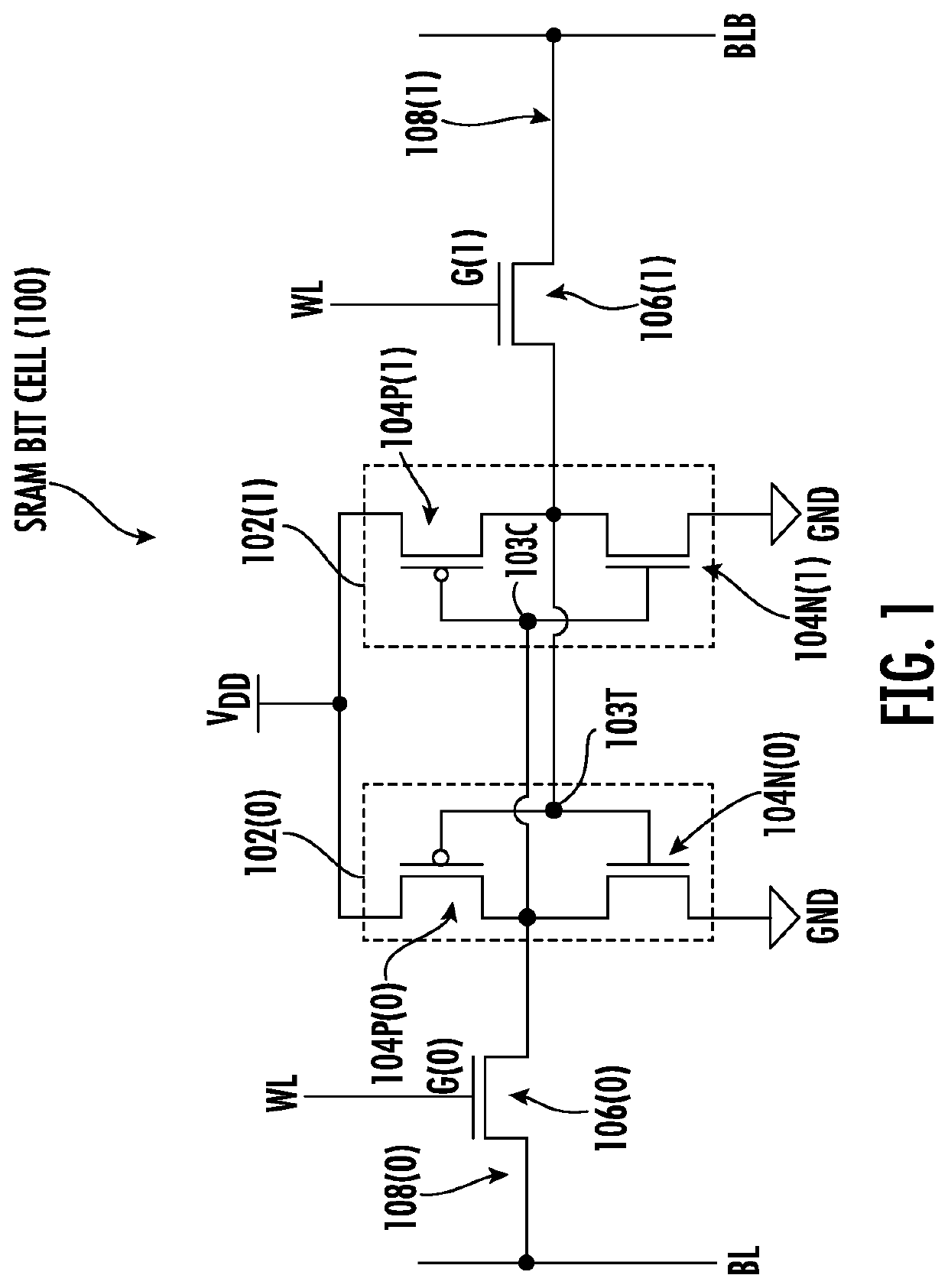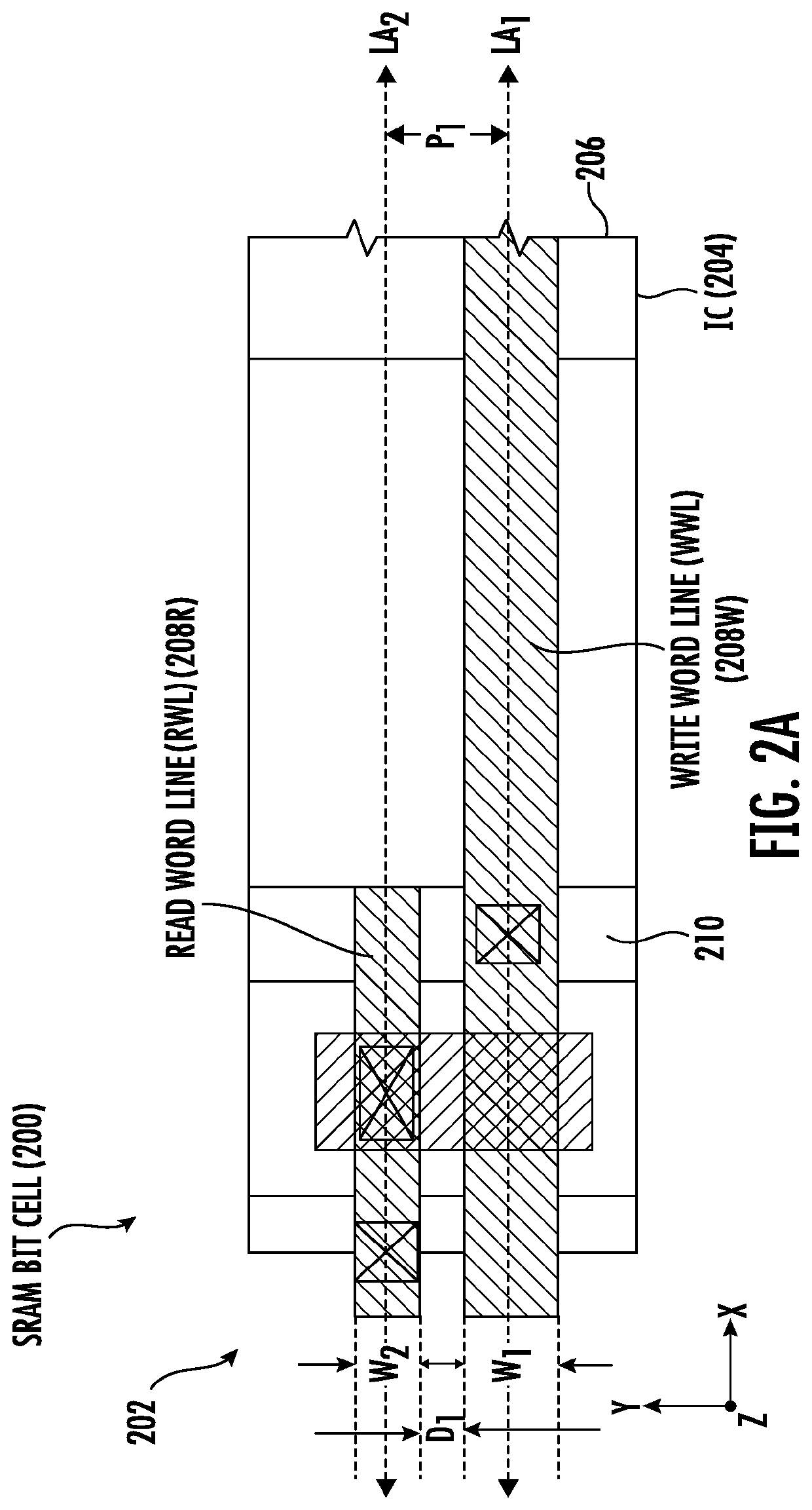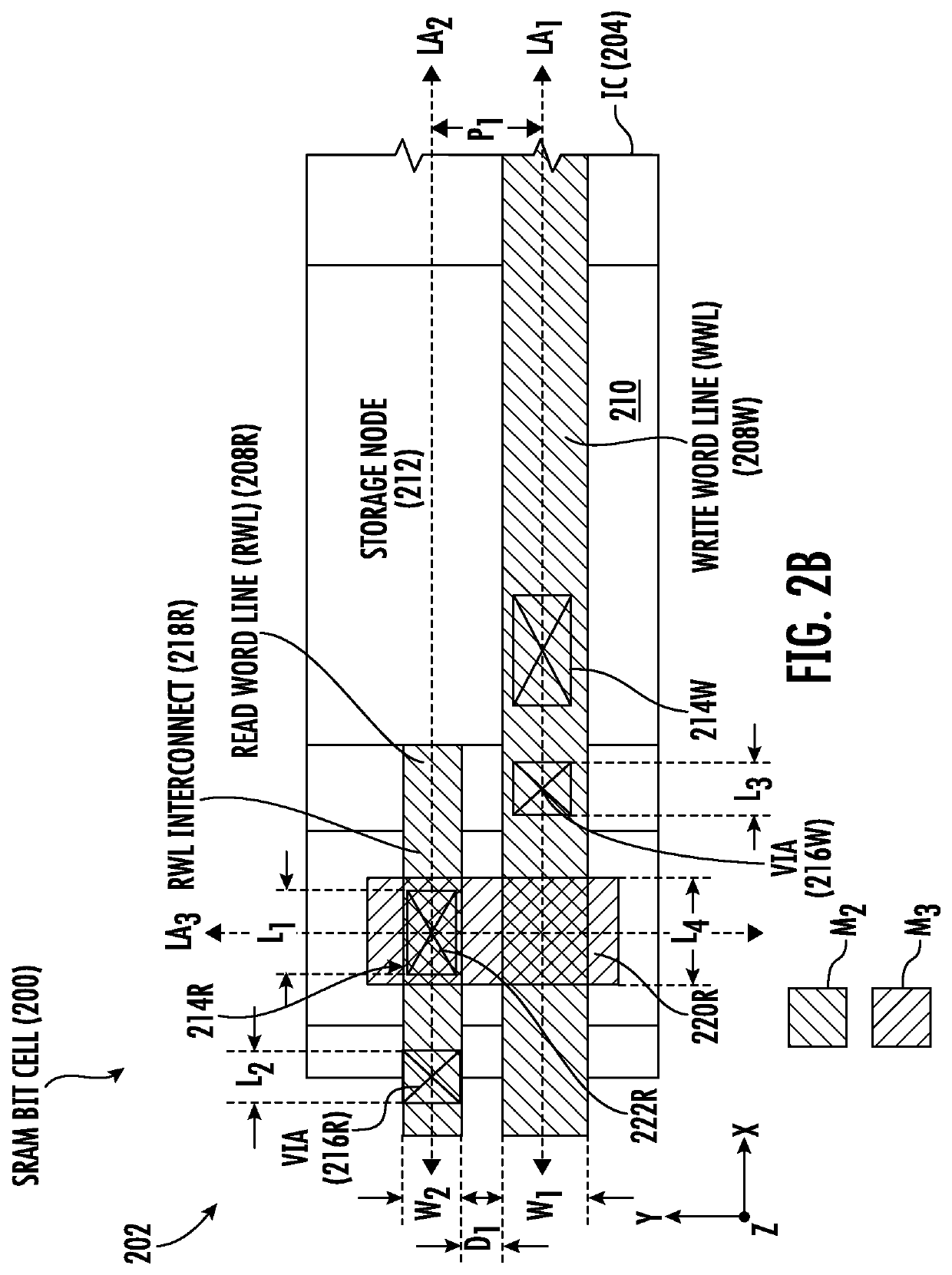Static random access memory (SRAM) bit cells employing asymmetric width read and write word lines, and related methods
a random access memory and bit cell technology, applied in the field of memory for computer systems for reading and writing data, can solve the problems of over-all desired memory access latency, achieve the effects of reducing memory write latency, improving memory write access performance, and increasing the width of the write word lin
- Summary
- Abstract
- Description
- Claims
- Application Information
AI Technical Summary
Benefits of technology
Problems solved by technology
Method used
Image
Examples
Embodiment Construction
[0027]With reference now to the drawing figures, several exemplary aspects of the present disclosure are described. The word “exemplary” is used herein to mean “serving as an example, instance, or illustration.” Any aspect described herein as “exemplary” is not necessarily to be construed as preferred or advantageous over other aspects.
[0028]Aspects disclosed herein include static random access memory (SRAM) bit cells employing an asymmetric width read and write word lines. Related fabrication methods are also disclosed. SRAM bit cells employing asymmetric width read and write word lines can reduce memory write latency and improve memory write access performance. The SRAM bit cell may be provided in the form of a complementary metal oxide semiconductor (CMOS) circuit in a cell circuit according to a circuit cell design layout in an example. The routing area provided for the layout of the write word line and read word line in the circuit cell for the SRAM bit cell is based on the des...
PUM
 Login to View More
Login to View More Abstract
Description
Claims
Application Information
 Login to View More
Login to View More - R&D
- Intellectual Property
- Life Sciences
- Materials
- Tech Scout
- Unparalleled Data Quality
- Higher Quality Content
- 60% Fewer Hallucinations
Browse by: Latest US Patents, China's latest patents, Technical Efficacy Thesaurus, Application Domain, Technology Topic, Popular Technical Reports.
© 2025 PatSnap. All rights reserved.Legal|Privacy policy|Modern Slavery Act Transparency Statement|Sitemap|About US| Contact US: help@patsnap.com



